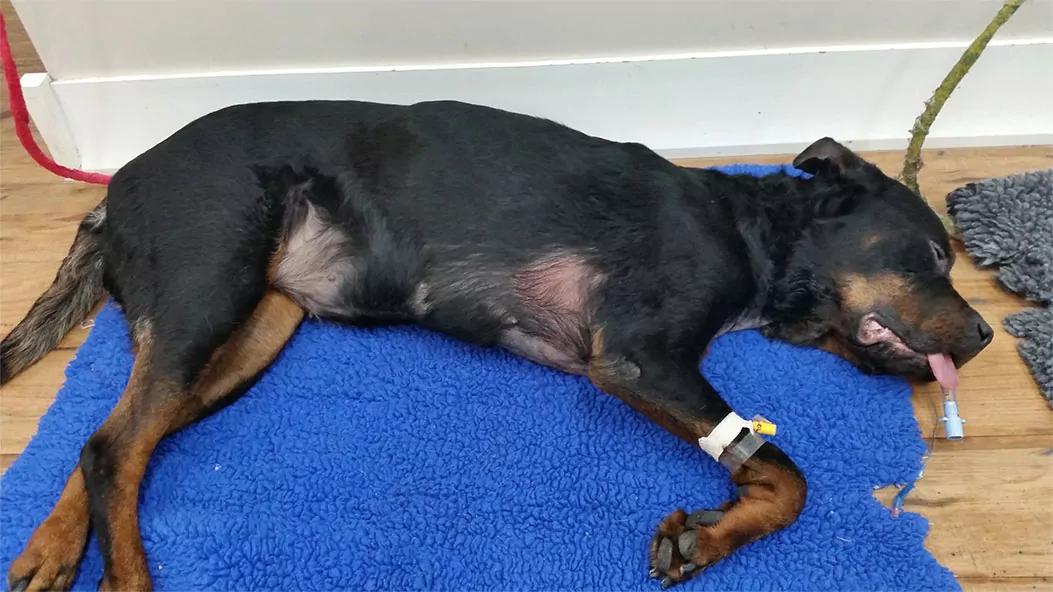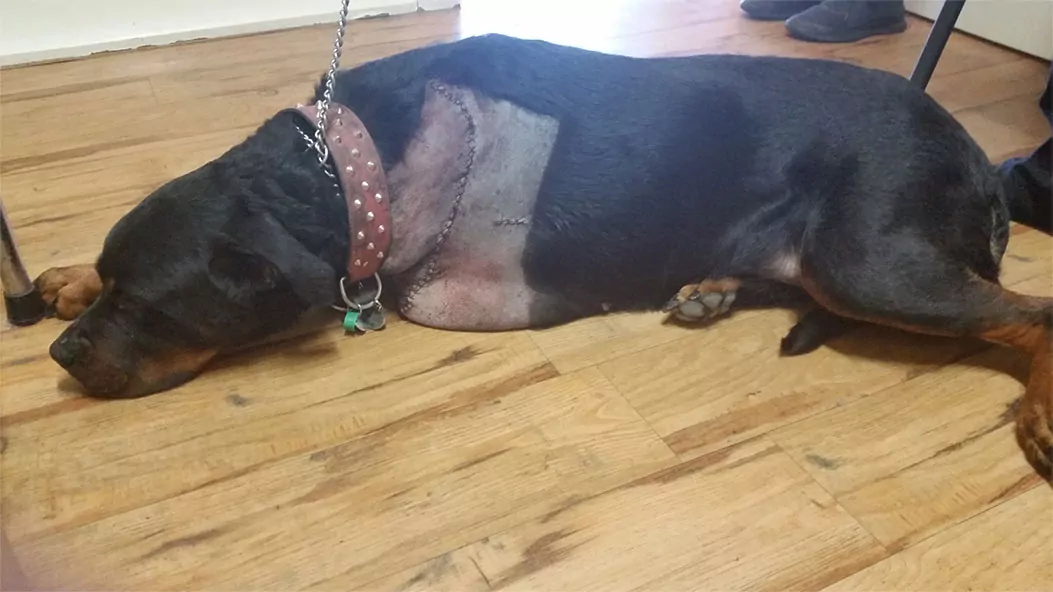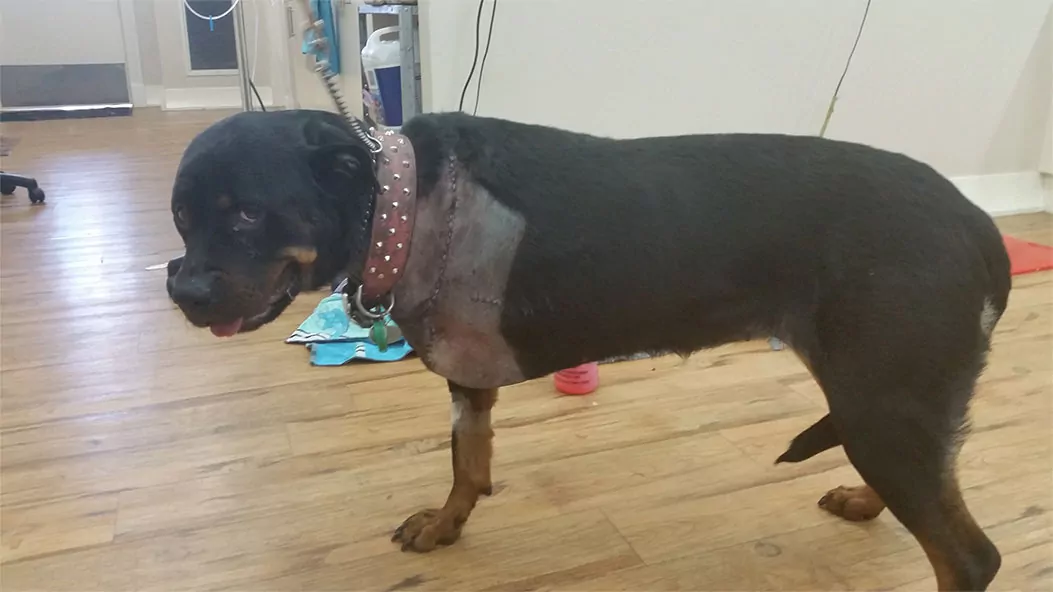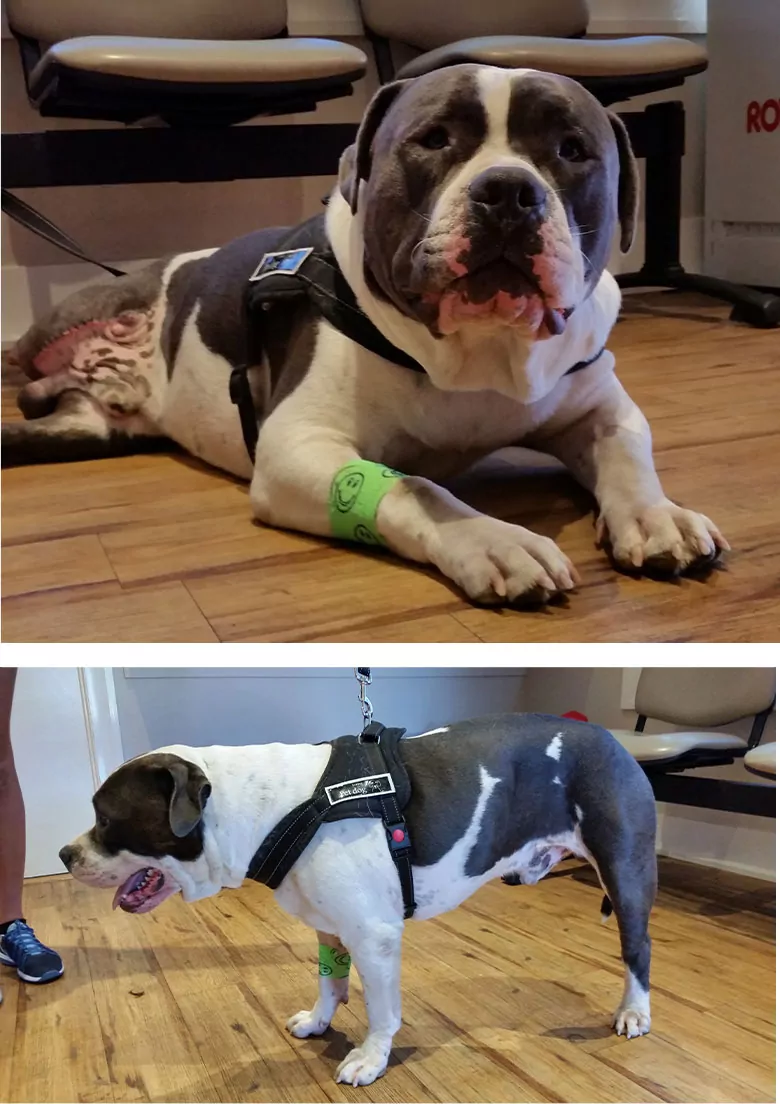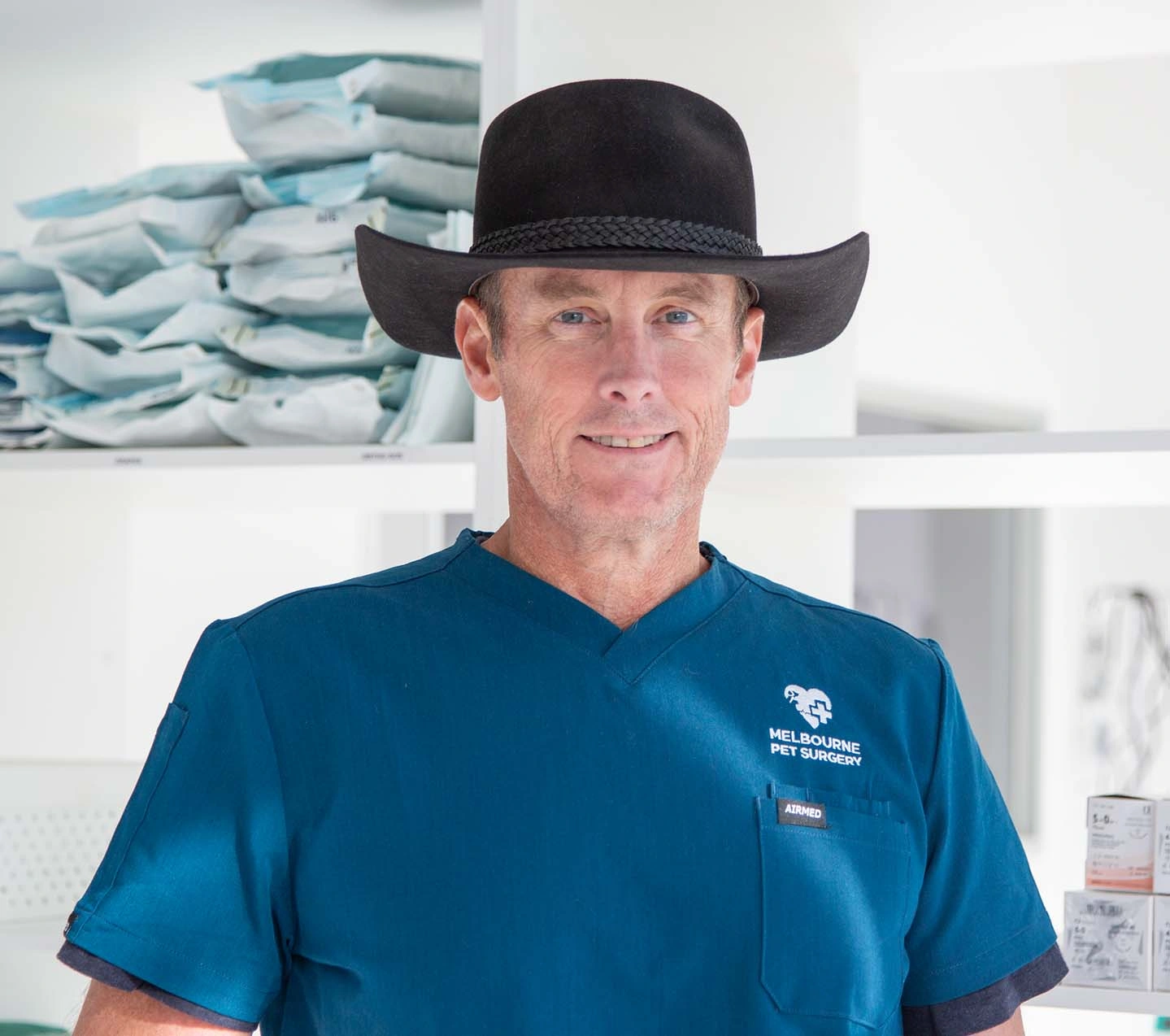Osteosarcoma: Bone Cancer in Dogs
What is an osteosarcoma?
This is a tumour that grows within the bone itself. This usually occurs in the legs when it comes to dogs, but can also occur in the spine or jaw. Osteosarcomas are most common in larger dog breeds, generally in the femur and tibia (specifically near the knee), in the radius or ulna (specifically near the carpal tunnel joint, or the wrist), or in the humerus (specifically near the shoulder).
One of the most common signs that your pet is suffering from osteosarcoma is lameness in the affected leg. Other symptoms that may appear in the months leading up to a diagnosis include swelling in the affected area as the tumour grows. This cancer is very painful; your dog will eventually stop using the affected limb all together.
Whilst they’re easily diagnosed with an x-ray, keep in mind that it can take a while for the tumours to grow big enough to actually be detected on an x-ray (typically a few months after the first signs of lameness appear). To diagnose osteosarcoma earlier, a CT scan be used – but these do come with a far higher cost.
Procedure cost
Limb removal costs around $2,000 to $3,000 at Melbourne Pet Surgery. If chemotherapy is an option for your pet, it will cost between $300 and $500 every three weeks.
Optional pre-anaesthetic blood test available for all surgeries (additional cost)
Recovery and aftercare
Usually, your pet will be able to return home the day after their surgery – and most will walk out of hospital on their own, which shows just how well they recover from amputation. We will send your pet home with antibiotics and pain relief to help manage their recovery. They will also need to return to the hospital two weeks later to have their sutures removed. Most dogs will be able to return to normal activity (including running) around a week after surgery. If you have chosen to utilise chemotherapy in your pet’s recovery, this will begin one to two weeks after amputation.
Gallery
